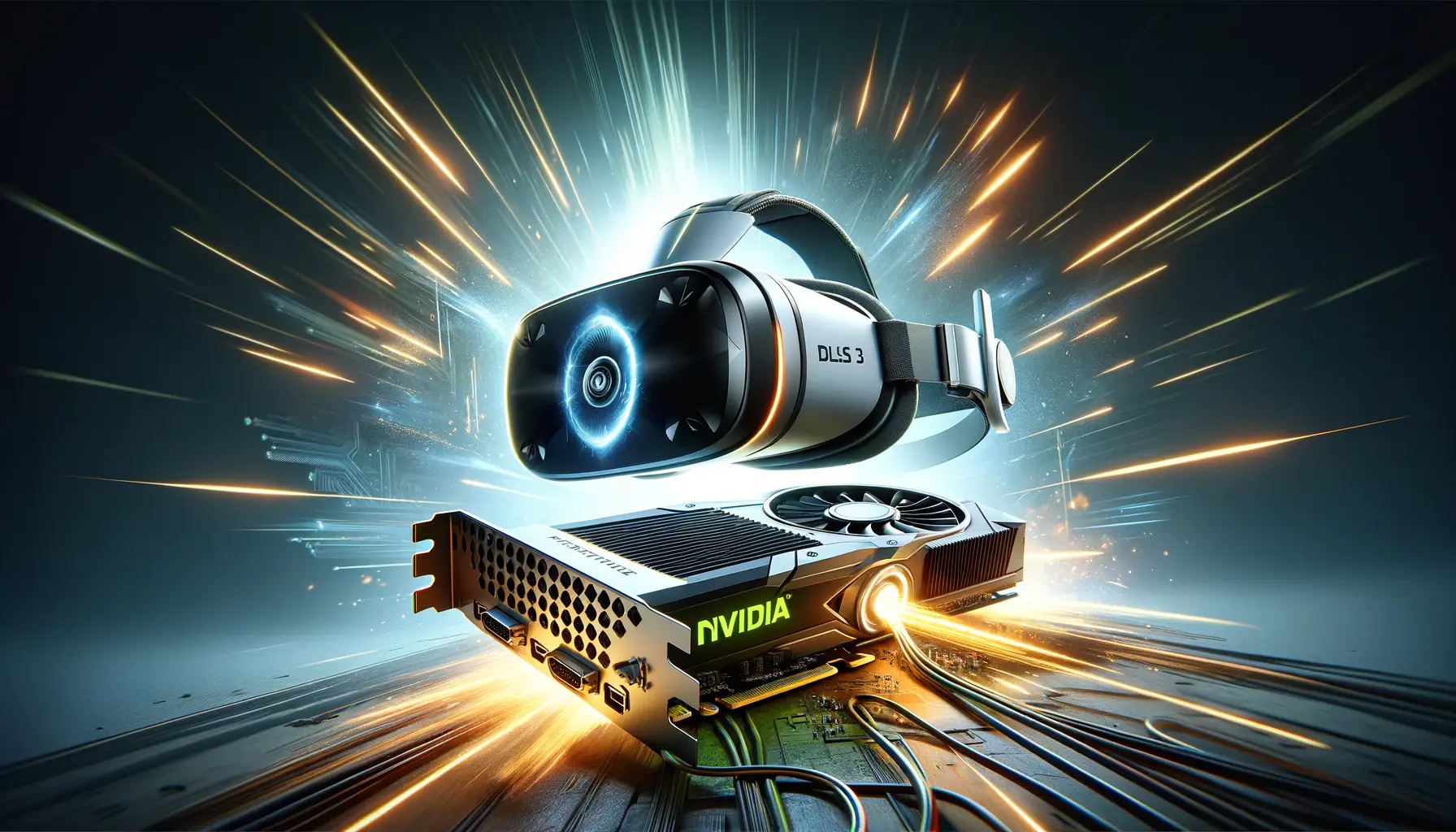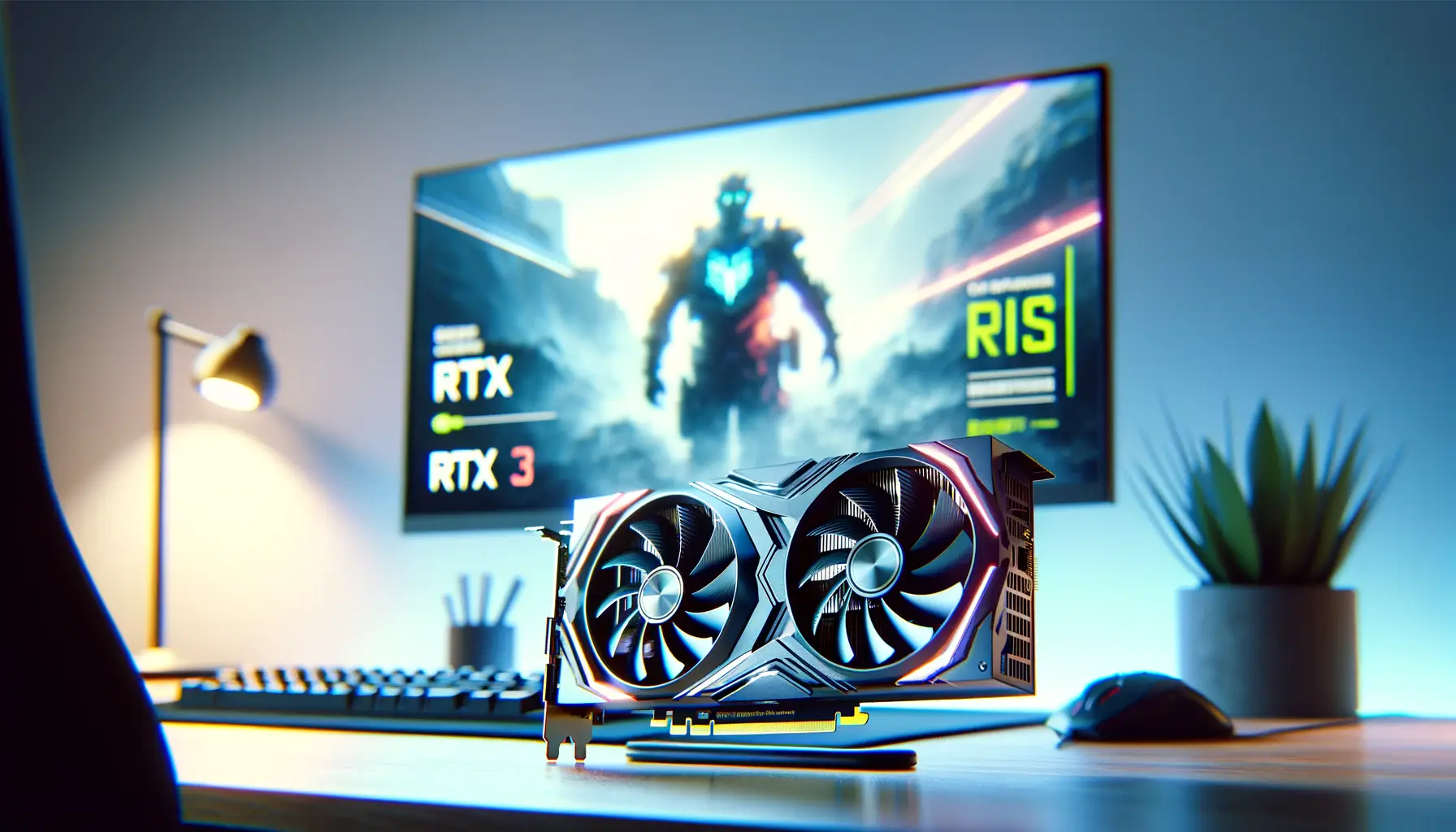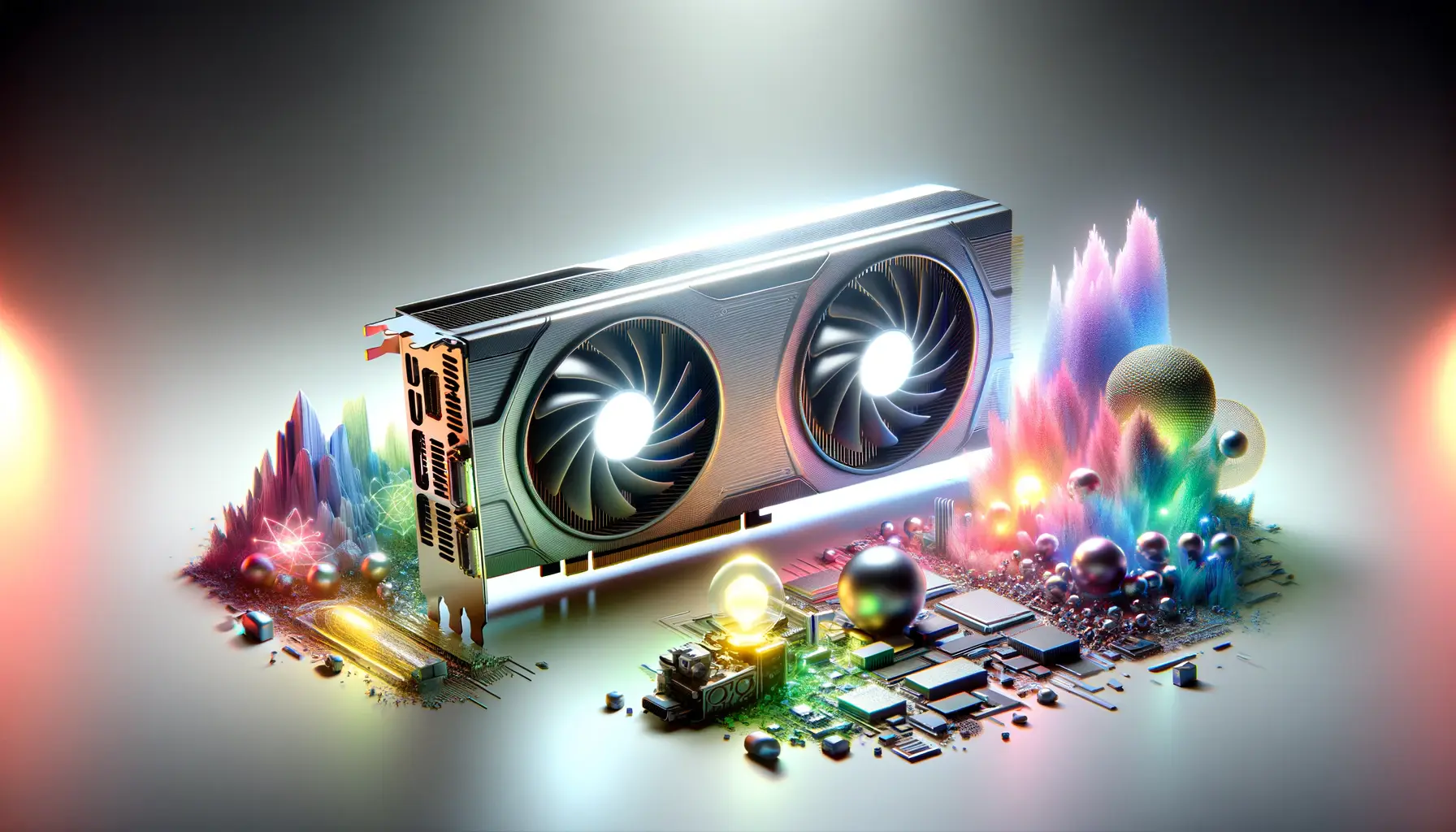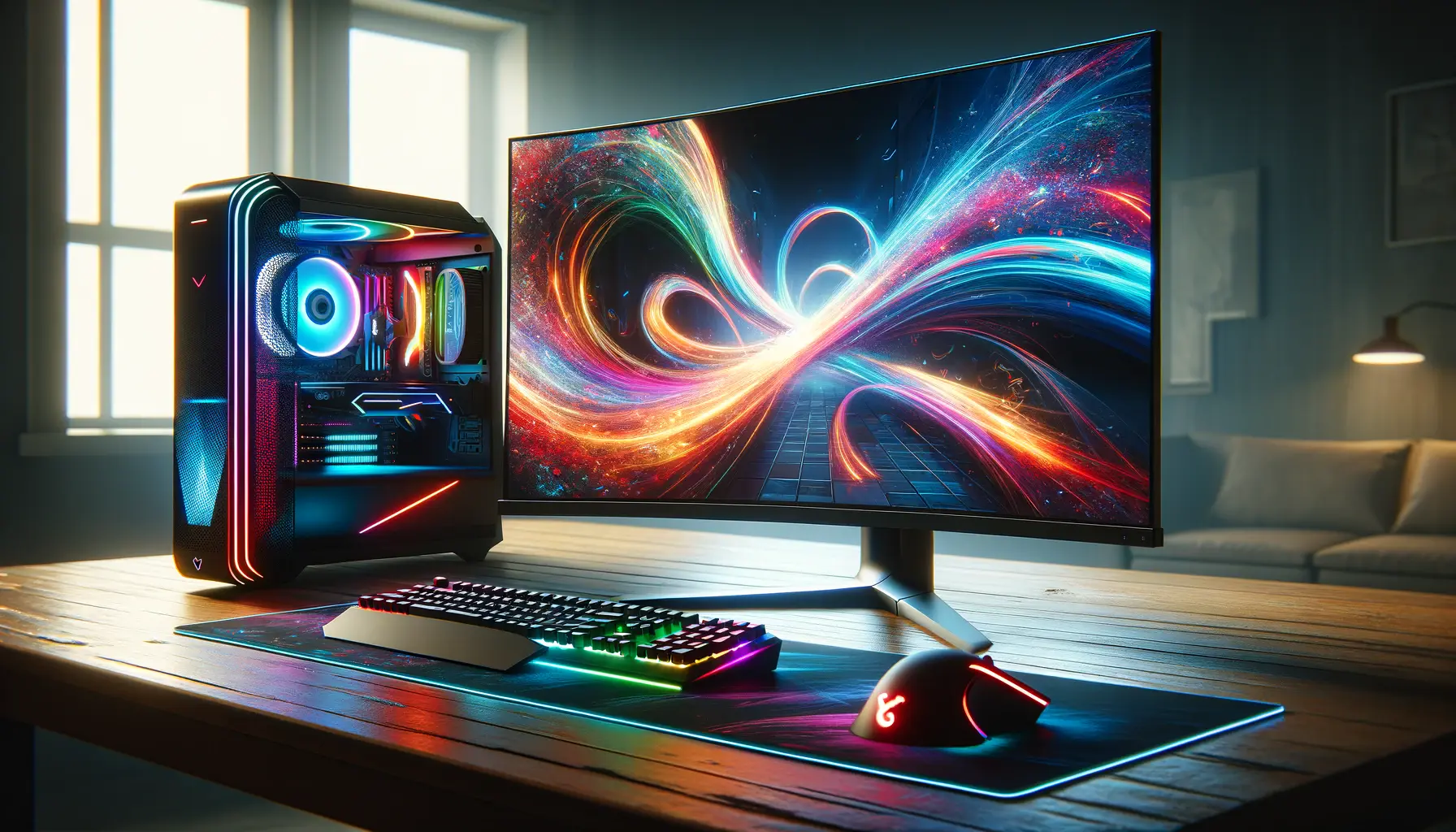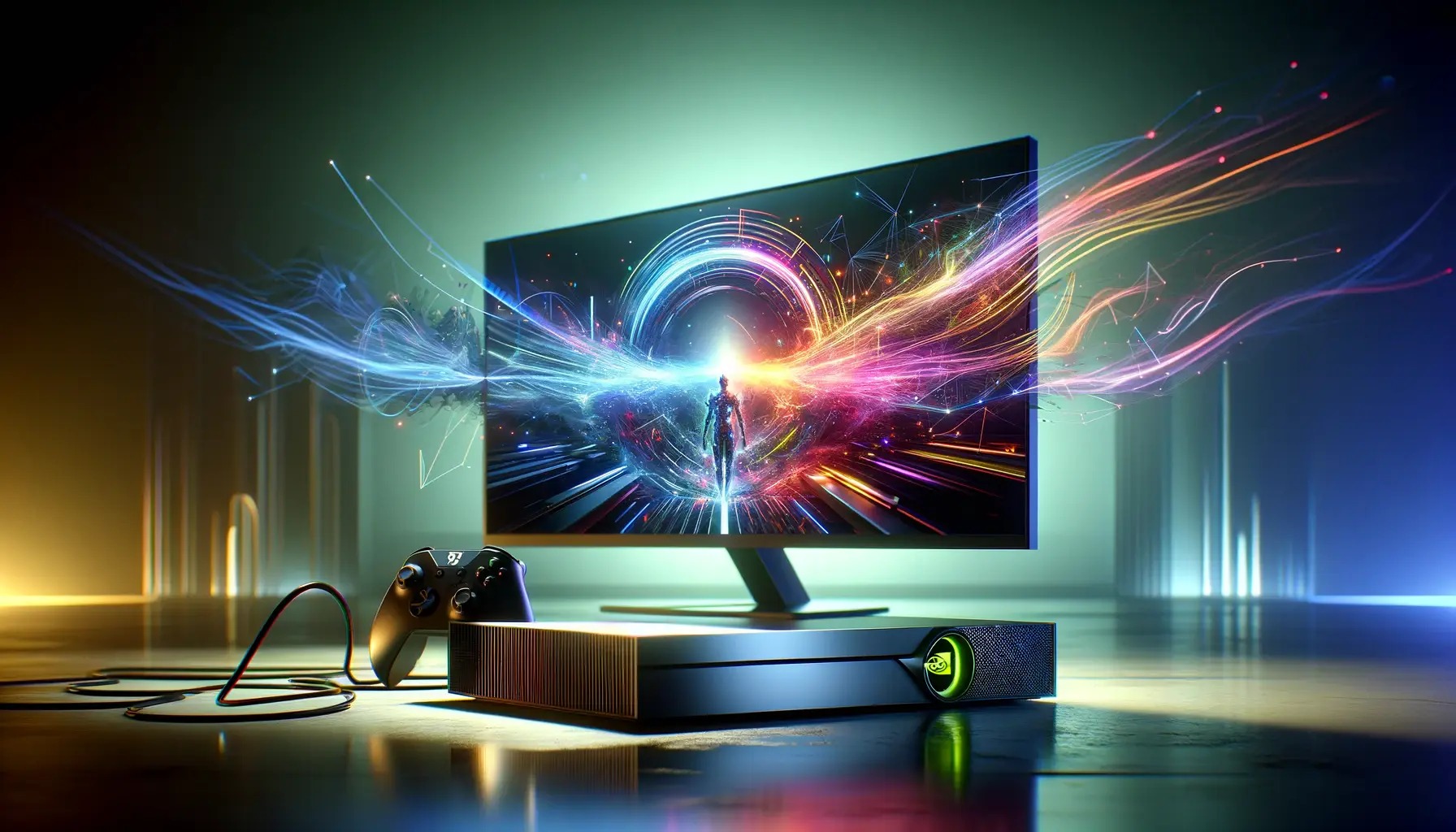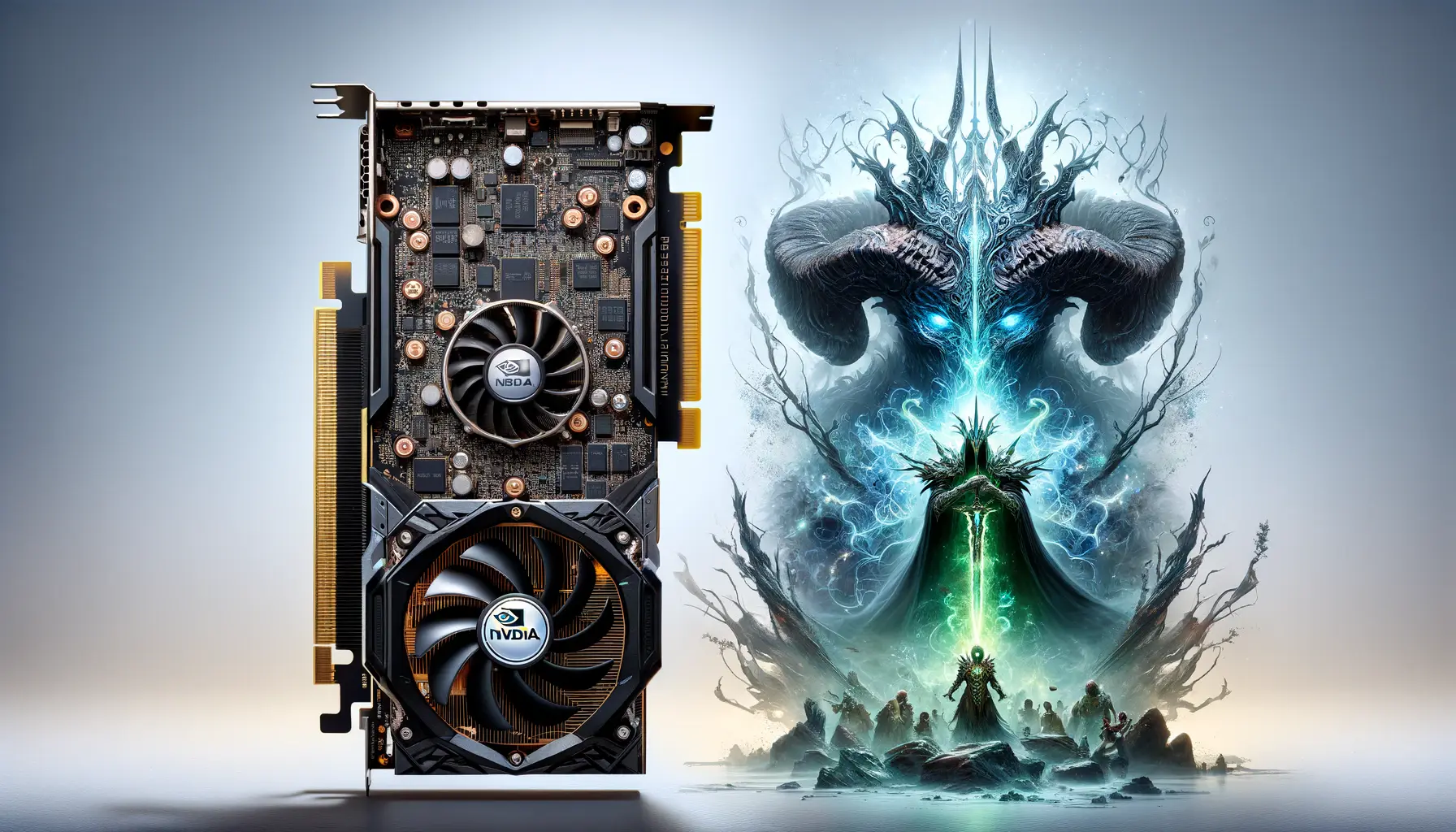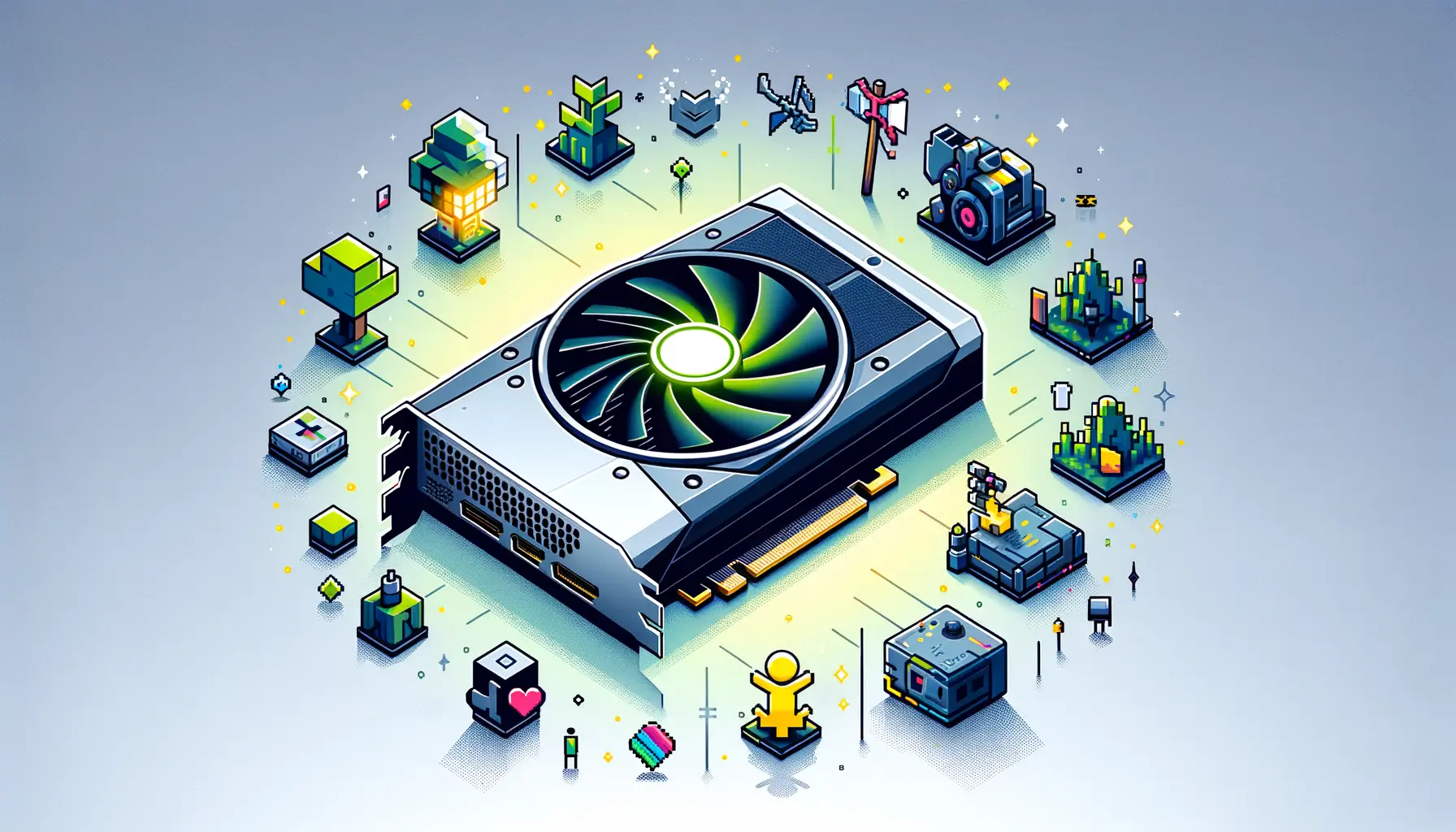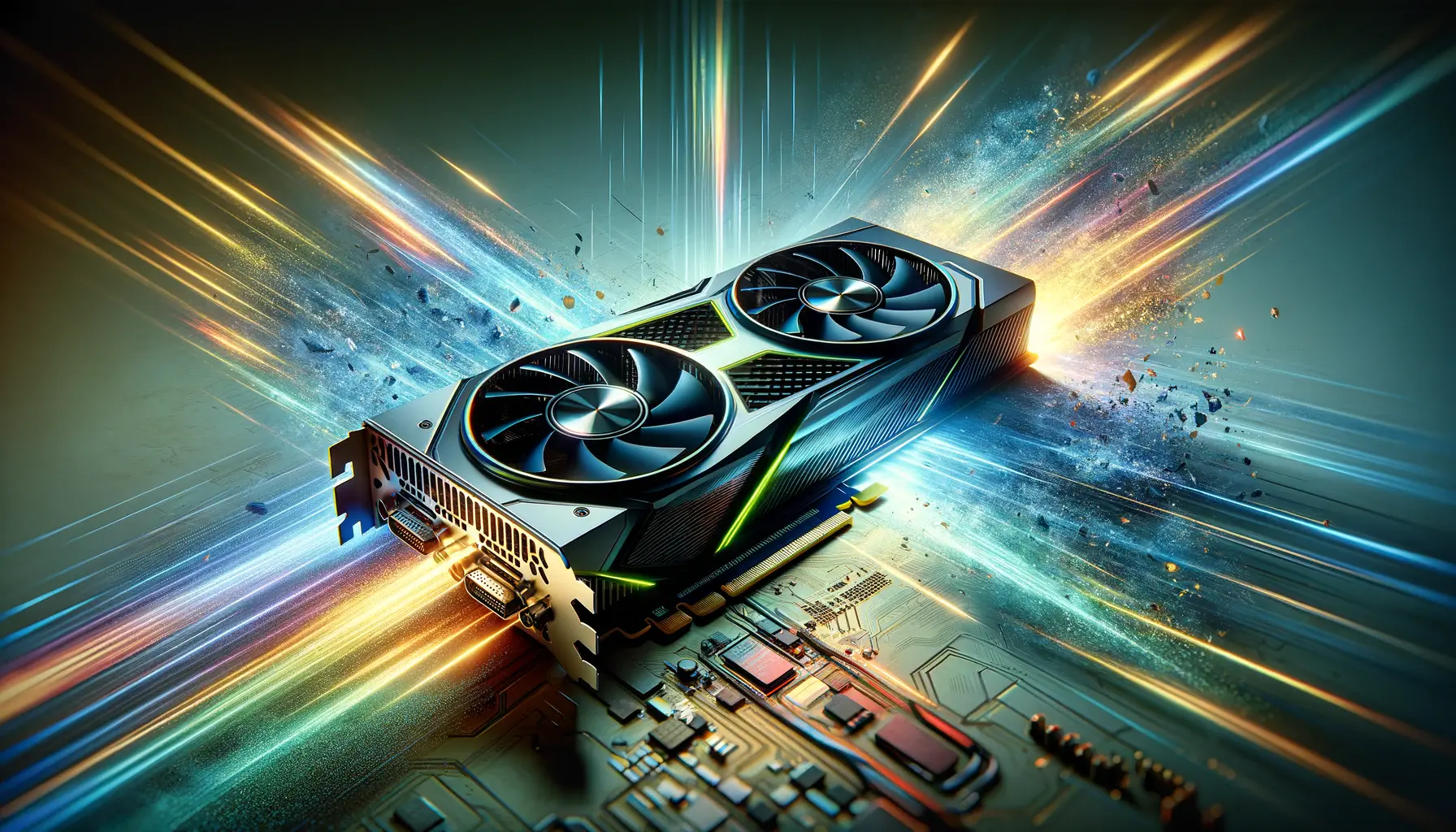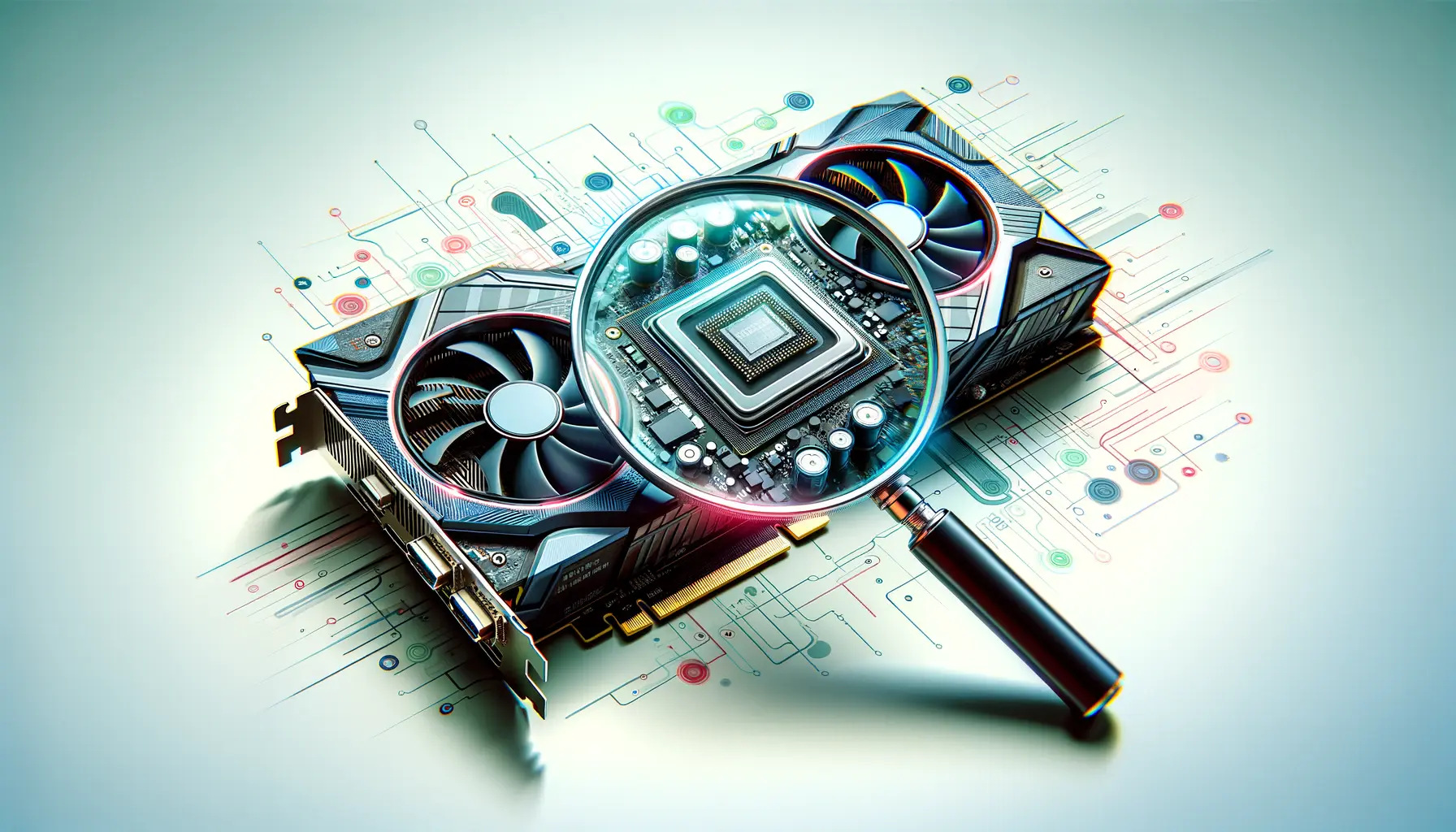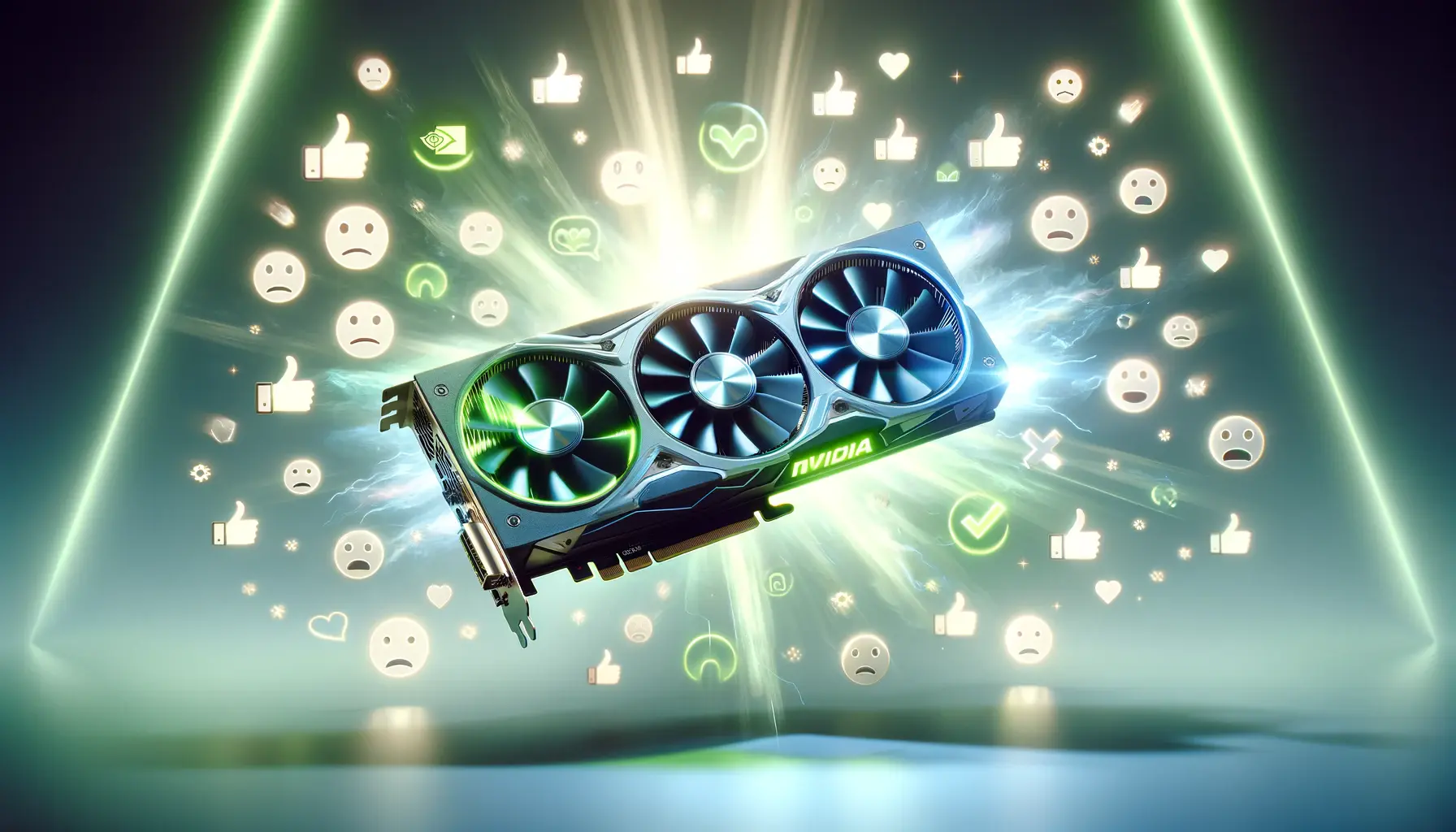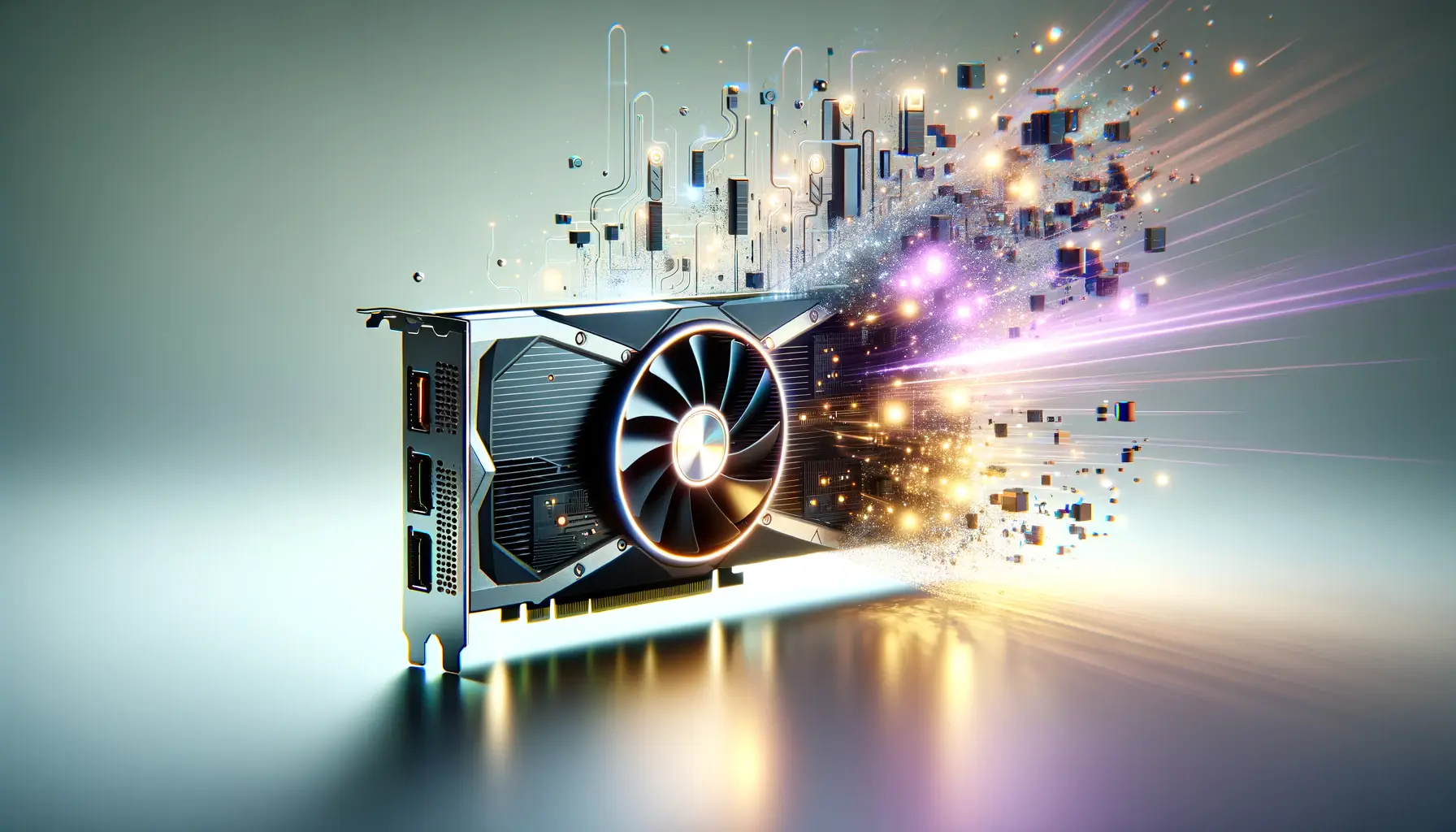The advent of NVIDIA’s Deep Learning Super Sampling (DLSS) technology has been a game-changer in the realm of video gaming, offering a significant leap forward in rendering efficiency and visual fidelity.
With the introduction of NVIDIA DLSS 3, the impact on virtual reality (VR) gaming is poised to redefine immersive experiences, pushing the boundaries of what’s possible in VR graphics and performance.
This technology, by leveraging AI and machine learning, not only enhances image quality but also boosts frame rates, making it a pivotal development in the VR gaming industry.
DLSS 3, as the latest iteration of NVIDIA’s groundbreaking technology, brings to the table an array of improvements and new features designed to optimize gaming experiences.
Its impact on VR gaming, characterized by the need for high frame rates and impeccable image quality to maintain immersion and prevent motion sickness, is particularly profound.
By intelligently upscaling images, DLSS 3 allows VR games to run at higher resolutions without the traditional computational cost, ensuring smoother and more engaging gameplay.
- Understanding DLSS and Its Evolution
- DLSS 3’s Role in Enhancing Visual Fidelity
- Optimizing Performance for VR Hardware
- DLSS 3 and the Future of VR Gaming
- Challenges and Considerations in Implementing DLSS 3 for VR
- Community and Developer Feedback on DLSS 3 in VR
- Exploring the Synergy Between DLSS 3 and Other VR Technologies
- Forging the Future of VR Gaming with NVIDIA DLSS 3
- NVIDIA DLSS 3 Impact on VR Gaming FAQs
Understanding DLSS and Its Evolution
Deep Learning Super Sampling (DLSS) is a revolutionary AI-based technology developed by NVIDIA to enhance graphics rendering.
By utilizing deep learning algorithms, DLSS analyzes thousands of images to learn how to produce sharper images and boost frame rates.
The evolution of DLSS from its first iteration to DLSS 3 showcases NVIDIA’s commitment to enhancing gaming experiences through technology.
Each version has brought significant improvements, with DLSS 3 setting a new standard for performance and image quality.
DLSS 3 introduces the concept of frame generation, a feature that goes beyond traditional upscaling.
By predicting and generating intermediate frames, DLSS 3 effectively doubles the perceived frame rate, a feature that is particularly beneficial for VR gaming where fluid motion and quick response times are crucial.
This leap in technology not only enhances visual fidelity but also reduces latency, providing a seamless and immersive VR experience.
Impact on VR Gaming Performance
The introduction of DLSS 3 into VR gaming marks a significant milestone in the pursuit of hyper-realistic and smooth gaming experiences.
VR games, known for their high demand on system resources, particularly benefit from DLSS 3’s frame generation and upscaling capabilities.
This technology allows VR titles to achieve higher frame rates and resolutions without necessitating top-tier hardware, making VR gaming more accessible to a broader audience.
Moreover, the reduction in latency and increase in frame rates contribute to a significant reduction in motion sickness, a common issue among VR users.
By providing a smoother and more stable visual experience, DLSS 3 enhances the overall enjoyment and comfort of VR gaming, encouraging longer and more frequent gaming sessions.
DLSS 3’s frame generation technology is a game-changer for VR gaming, offering enhanced performance, reduced latency, and improved visual quality.
DLSS 3’s Role in Enhancing Visual Fidelity
The core appeal of virtual reality lies in its ability to immerse players in vivid, lifelike environments.
DLSS 3 plays a pivotal role in enhancing this visual fidelity, ensuring that VR worlds are rendered with the utmost clarity and detail.
By leveraging artificial intelligence, DLSS 3 significantly improves image quality, making every texture, shadow, and light source in VR games more realistic and immersive.
Technological Breakthroughs in Image Upscaling
DLSS 3’s advanced AI algorithms analyze and learn from high-quality images, enabling the technology to upscale lower-resolution images in real-time without compromising on detail.
This process involves:
- Examining thousands of pairs of low and high-resolution images to understand how details are lost and can be recreated.
- Generating pixels that accurately match the intended high-resolution image, filling in details that were not originally present in the lower resolution.
This method of upscaling is particularly beneficial for VR, where the demand for high-resolution images is paramount to maintaining immersion.
Improvements Over Previous DLSS Versions
Compared to its predecessors, DLSS 3 offers significant improvements in image quality and performance.
These enhancements include:
- Reduced flickering and artifacting, ensuring a more stable and consistent image quality.
- Enhanced sharpness and clarity, making distant objects and textures more distinguishable and realistic.
- Improved color accuracy and contrast, which contribute to more vibrant and lifelike virtual environments.
These improvements are crucial for VR gaming, where even minor visual imperfections can break immersion or cause discomfort.
DLSS 3’s advancements in image upscaling and fidelity are instrumental in pushing VR gaming closer to photorealism, enhancing the overall immersive experience.
Optimizing Performance for VR Hardware
One of the most significant challenges in VR gaming is the hardware demand.
High-quality VR experiences require substantial processing power to maintain high frame rates and resolution, which can be a barrier for many users.
DLSS 3 addresses this challenge head-on, optimizing performance to make VR gaming more accessible and enjoyable on a wider range of systems.
Reducing the Hardware Barrier
DLSS 3’s efficiency in rendering allows gamers to experience high-quality VR without needing the latest, most expensive hardware.
This democratization of VR gaming is achieved through:
- Lowering the GPU load by rendering fewer base frames and using AI to fill in the gaps, allowing for higher settings or resolutions on existing hardware.
- Enabling games to run smoothly on mid-range systems without compromising on visual quality, thus broadening the accessibility of high-quality VR experiences.
Enhancing Game Performance on Various Systems
The adaptability of DLSS 3 means that it can significantly enhance game performance across a variety of system specifications.
Key benefits include:
- For high-end systems, DLSS 3 allows for unprecedented levels of detail and smoothness, pushing the boundaries of what’s visually possible in VR.
- Mid-range systems see the most dramatic improvements, with DLSS 3 enabling them to run games at higher resolutions and settings than previously possible.
- Even entry-level VR-ready systems can benefit from DLSS 3, achieving smoother frame rates and better overall performance, making VR gaming more accessible to a wider audience.
DLSS 3’s optimization for VR hardware not only enhances the gaming experience across all levels of gaming rigs but also lowers the entry barrier for new VR enthusiasts.
DLSS 3 and the Future of VR Gaming
The integration of DLSS 3 into VR gaming is not just a current enhancement but a significant step towards the future of immersive gaming.
As VR technology continues to evolve, the role of advanced rendering techniques like DLSS 3 becomes increasingly crucial in shaping the experiences that gamers and developers can expect.
Setting New Standards for Immersion
DLSS 3 is setting new benchmarks for what is considered immersive in VR gaming.
By enabling higher resolutions and smoother frame rates, it allows developers to create more detailed and expansive virtual worlds.
This leap in technology means that:
- Future VR games can feature more complex environments and detailed textures without the performance penalties typically associated with such high-quality visuals.
- Players can expect a deeper level of immersion, with virtual worlds feeling more lifelike and responsive.
Encouraging Innovation in Game Development
The capabilities of DLSS 3 are encouraging game developers to push the boundaries of VR gaming.
With the performance and visual quality improvements offered by DLSS 3, developers can:
- Incorporate more advanced graphical features and effects that were previously too resource-intensive for VR.
- Design games with more dynamic and interactive elements, enhancing the overall gameplay experience.
This environment of enhanced capability and flexibility is likely to spur innovation in VR game design, leading to new genres and gameplay experiences that fully leverage the potential of VR technology.
The impact of DLSS 3 on VR gaming extends beyond current improvements, setting the stage for a future where virtual realities are indistinguishable from the real world, and where gameplay experiences are only limited by the imagination.
Challenges and Considerations in Implementing DLSS 3 for VR
While DLSS 3 offers significant benefits for VR gaming, its implementation comes with its own set of challenges and considerations.
Understanding these factors is crucial for both developers and gamers to fully leverage the advantages of DLSS 3 while mitigating potential drawbacks.
Compatibility and Integration
Integrating DLSS 3 into VR games requires careful consideration of hardware and software compatibility.
Developers must ensure that:
- Games are optimized to take full advantage of DLSS 3’s capabilities without causing issues with existing VR hardware setups.
- There is seamless integration with a wide range of VR headsets and accessories, ensuring that all players can enjoy the benefits of DLSS 3.
This process involves extensive testing and optimization to maintain a balance between performance gains and system compatibility.
User Experience and Settings Customization
DLSS 3 significantly affects the visual and performance aspects of VR gaming, which means that user experience and customization options become more important.
Players should have the ability to:
- Customize DLSS settings to suit their preferences for image quality versus performance, finding the right balance for their specific hardware.
- Adjust these settings easily within the game, without needing to navigate complex menus or understand technical jargon.
Providing intuitive customization options ensures that gamers can tailor their VR experience to match their expectations and system capabilities.
Effective implementation of DLSS 3 in VR gaming requires addressing compatibility, integration, and user customization challenges to ensure a seamless and enjoyable experience for all players.
Community and Developer Feedback on DLSS 3 in VR
The introduction of DLSS 3 into the VR gaming landscape has sparked a vibrant dialogue among the gaming community and developers alike.
This feedback loop is crucial for refining and enhancing the technology to better meet the needs of VR enthusiasts and creators.
Gamer Reactions and Experiences
From online forums to social media, the gaming community has been vocal about their experiences with DLSS 3 in VR.
Many users report:
- Noticeable improvements in visual clarity and performance, particularly in more graphically intensive VR titles.
- A positive impact on the overall immersion, with smoother frame rates reducing motion sickness and enhancing the sense of presence within virtual environments.
However, some users have also expressed concerns about the need for clearer information on optimizing DLSS 3 settings for individual games and hardware configurations.
Developer Insights and Future Plans
Developers who have integrated DLSS 3 into their VR titles share insights into the process and future plans for leveraging the technology:
- Many developers highlight the ease of integrating DLSS 3 with existing game engines, praising NVIDIA’s support and documentation.
- There is a strong interest in exploring how DLSS 3 can be used not just for performance optimization but also as a tool for creative expression, enabling more detailed and dynamic virtual worlds.
Feedback from both gamers and developers is shaping the ongoing development of DLSS 3, with NVIDIA actively engaging with the community to address concerns and incorporate suggestions into future updates.
The dialogue between the gaming community, developers, and NVIDIA is fostering a collaborative environment that is driving the continuous improvement and optimization of DLSS 3 for VR gaming.
Exploring the Synergy Between DLSS 3 and Other VR Technologies
The integration of DLSS 3 into VR gaming does not occur in isolation.
Instead, it complements and enhances a range of other technologies and advancements in the VR space.
Understanding the synergy between DLSS 3 and these technologies provides insight into the future trajectory of VR gaming.
Combining DLSS 3 with Ray Tracing in VR
Ray tracing technology, known for its ability to simulate realistic lighting effects, pairs exceptionally well with DLSS 3 in VR environments.
This combination allows for:
- Unprecedented levels of realism in VR games, with lighting, shadows, and reflections that closely mimic the real world.
- Improved performance, as DLSS 3 helps offset the high computational cost of ray tracing, making these advanced visuals more accessible.
DLSS 3 and Next-Generation VR Headsets
As VR hardware continues to evolve, next-generation VR headsets stand to benefit significantly from DLSS 3.
Features such as:
- Higher resolution displays, which will be able to run at native resolutions without compromising performance, thanks to DLSS 3.
- Increased refresh rates, ensuring smoother motion and reducing the risk of motion sickness, are made more feasible with DLSS 3’s performance enhancements.
Future VR Content Creation and DLSS 3
The impact of DLSS 3 extends beyond gaming into the realm of VR content creation.
With DLSS 3, creators can:
- Develop more detailed and complex VR experiences, pushing the boundaries of what’s currently possible in terms of visual fidelity.
- Efficiently render high-quality VR video content, opening up new possibilities for immersive storytelling and virtual tours.
The synergy between DLSS 3 and other VR technologies is catalyzing a new era of VR gaming and content creation, characterized by stunning visuals, seamless performance, and boundless creative potential.
Forging the Future of VR Gaming with NVIDIA DLSS 3
The journey through the landscapes of VR gaming, illuminated by the advancements of NVIDIA DLSS 3, reveals a future where the lines between virtual and reality blur.
NVIDIA DLSS 3, with its deep learning and AI-driven capabilities, has not only addressed the perennial challenges of performance and visual fidelity but has also set a new benchmark for immersive experiences in VR gaming.
As we stand on the brink of this new era, it’s clear that DLSS 3 is not just an enhancement but a transformational force in VR gaming.
The Path Forward with DLSS 3
The impact of NVIDIA DLSS 3 on VR gaming is profound, offering a glimpse into a future where gamers can dive into ever more complex and visually stunning virtual worlds without the limitations of past hardware.
The synergy between DLSS 3 and emerging VR technologies paints a promising picture for the evolution of VR gaming:
- Enhanced realism and immersion, with DLSS 3 enabling more lifelike visuals and smoother gameplay that draws players deeper into virtual realms.
- Greater accessibility, as DLSS 3 allows for high-quality VR gaming on a broader range of hardware, opening up new worlds to a wider audience.
- Innovation in game development, with creators empowered to explore new horizons in VR content, unencumbered by the technical constraints of yesteryear.
Embracing the DLSS 3 Revolution
As NVIDIA DLSS 3 reshapes the landscape of VR gaming, both gamers and developers are invited to embrace this revolution.
For gamers, the promise of unparalleled immersive experiences awaits, with DLSS 3 serving as the key to unlocking the full potential of virtual reality.
Developers, on the other hand, are equipped with a powerful tool that can elevate their creative visions to new heights, crafting VR games and experiences that were once the stuff of dreams.
In conclusion, NVIDIA DLSS 3 stands as a pilla
NVIDIA DLSS 3 Impact on VR Gaming FAQs
Explore the most common inquiries about the transformative role of NVIDIA DLSS 3 in VR gaming.
DLSS 3 works with VR games that have integrated support for the technology, enhancing performance and visual quality.
While DLSS 3 is optimized for newer GPUs, it can still enhance VR gaming on older models by improving frame rates and image quality.
Frame generation, a feature of DLSS 3, is currently not supported in VR due to the unique demands of VR rendering.
DLSS 3 allows VR games to run at higher resolutions without the performance hit, making for clearer and more immersive visuals.
By providing smoother frame rates and reducing latency, DLSS 3 can help minimize motion sickness in VR gaming.
DLSS 3 requires an NVIDIA RTX series GPU that supports the technology, alongside a VR-ready PC setup.
